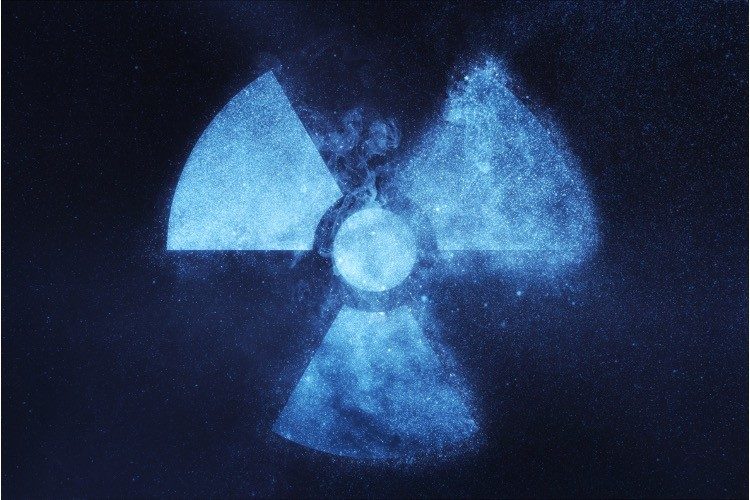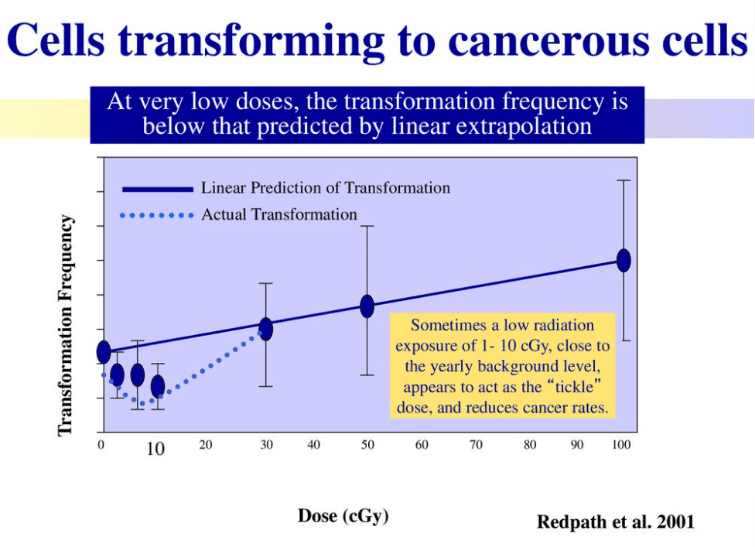
The American Nuclear Society (ANS) is planning a July 15 webinar entitled “High Expectations for the Future of Low-Dose Radiation Research.” The teaser for this webinar states:
Improving humanity’s understanding of the health impacts of low-dose radiation has intrigued biologists, academics, policymakers, nuclear professionals, and others for decades. The global and domestic endeavors associated with low-dose radiation research have been anything but smooth sailing. However, recent progress brought on by federal action may chart a new course for success. A panel of federal policy and science experts will discuss what the future of low-dose radiation research may hold, including the impact of the recent National Academy of Sciences Study.
The “success” that the ANS alludes to would be the recognition of low-dose radiation hormesis and acknowledgement of the invalidity of the linear no-threshold (LNT) dose-response model for low radiation doses and dose-rates. (“Hormesis” is a term used in toxicology to indicate the principle that “the dose makes the poison.” LNT is the erroneous belief that all radiation, no matter the dose, is dangerous.)
However, it is not clear why the ANS is hopeful in light of the referenced National Academy of Sciences (NAS) study. NAS claims “increasing evidence” that low-dose radiation is linked not only to cancer but also to myriad other diseases and disorders.
Moreover, NAS issued a June 2 news release, which referenced the same study, and recommended:
The U.S. should establish a new coordinated research program to investigate the impacts of exposure to low doses of radiation on human health, says a new report from the National Academies of Sciences, Engineering, and Medicine. The report estimates $100 million annually for the next 15 years would be required to conduct epidemiological and biological research, and to establish an infrastructure for research. This coordinated program should study how low doses of radiation affect cancer risks, cardiovascular disease risk, neurological disorders, and other disease — and try to establish causal links to health conditions. Research should also better define the impacts of radiation doses, dose rates, types of radiation, and exposure duration.
It is interesting that NAS openly admits it wants researchers to “try to establish causal links,” when skepticism should be the rule in honest investigation.
It is also notable that the previous Department of Energy low-dose radiation research program was defunded in 2011. Rod Adams provided the following opinion as to why that program was defunded:
… as detailed research on the actual health effects started to demonstrate that the current artifice of regulations based on the linear, no threshold dose assumption (LNT) could not be supported by measurements and observations, subtle and skilled pressure was brought to bear. The program was slowly, but steadily, defunded and tasks were distributed into less focused programs that are heavily influenced by epidemiologists.
In support of this opinion, the graphic below, showing beneficial effects of ionizing radiation doses up to 10 centi-Gray, initially appeared and was subsequently removed from the government website when the low-dose radiation research program was cancelled. (Click here for a brief explanation of nuclear measurements, including the Gray metric unit.)

The NAS news release continues:
Radiation exposure at low doses (below 100 milligray) or low-dose rates (less than 5 milligray per hour) occurs in a wide range of medical, industrial, military, and commercial settings. The effects of exposure at these levels are not fully understood, the report says, and there are long-standing concerns that such exposure could negatively affect human health. Although cancer has been linked to low-dose radiation exposure for decades, there is increasing evidence that it may also be associated with cardiovascular disease, neurological disorders, immune dysfunction, and cataracts. [Emphasis added.]
Despite the claim that effects of low-dose radiation exposure are not fully understood, as a result of many decades of research, the health impacts of radiation are very well understood. Even the Centers for Disease Control and Prevention (CDC) states that radiation exposure is one of the best understood health hazards, as the effects of radiation have been studied for over 100 years. In a 2016 report, the United Nations Environment Programme (UNEP) noted:
We know more about the sources and effects of exposure to [ionizing] radiation than to almost any other hazardous agent, and the scientific community is constantly updating and analysing its knowledge.
The only link between cancer risk and low-dose radiation exposure is the false assumption that the LNT dose-response model is valid. The New American has a library of articles which explain the science behind this statement. See here, here, and here for examples.
Finally, the NAS news release provides no citations to support the statement that there is increasing evidence of an association between low-dose radiation exposure and supposed negative health impacts.
So, despite a past failed attempt to establish a causal link between low-dose ionizing radiation and cancer risk, it is being proposed that the U.S. government spend another $100 million annually for the next 15 years in an attempt to justify continued use of the LNT dose-response model for predicting cancer risk as well as cardiovascular disease risk, neurological disorders, etc.
The news release concludes that:
Concerns about the health effects of low doses of radiation raise questions as to whether the public and workers are adequately protected from exposures from medical diagnostics procedures such as CT scans, legacy exposures from nuclear weapons production and nuclear waste management, and new sources of exposure such as rare earth element and lithium mining, among others.
It also alleges that there is much we don’t know about the impacts of low-dose radiation exposures on our health, and we therefore need to provide answers to the questions of “concerned individuals and to communities that have been involuntarily exposed to radiation, including Indigenous communities, atomic veterans, nuclear workers, and others impacted by the legacy of U.S. nuclear weapons testing and production.”
These concluding statements are loaded with social-justice terminology. They essentially set the stage for a political outcome that would support continued use of the LNT model for predicting radiation-induced cancers, as well as continued payments of radiation-induced injury claims under the Radiation Exposure Compensation Act (RECA). They will surely also increase the level of radiophobia in America. In fact, it appears that these agenda-driven, social-justice “concerns” — rather than science — may be the driver of the proposal for a new research program. Lacking any objective evidence of low-dose radiation-induced health effects over the past 100 years, there is little reason to believe that any other outcome is possible.
Editor’s Note: This article is the fourth in a continuing series published by The New American. For background material, please reference Dispelling Irrational Fear of Radiation, Understanding Radiation Risks & Benefits, and The Dynamic World of Radioactive Decay.



